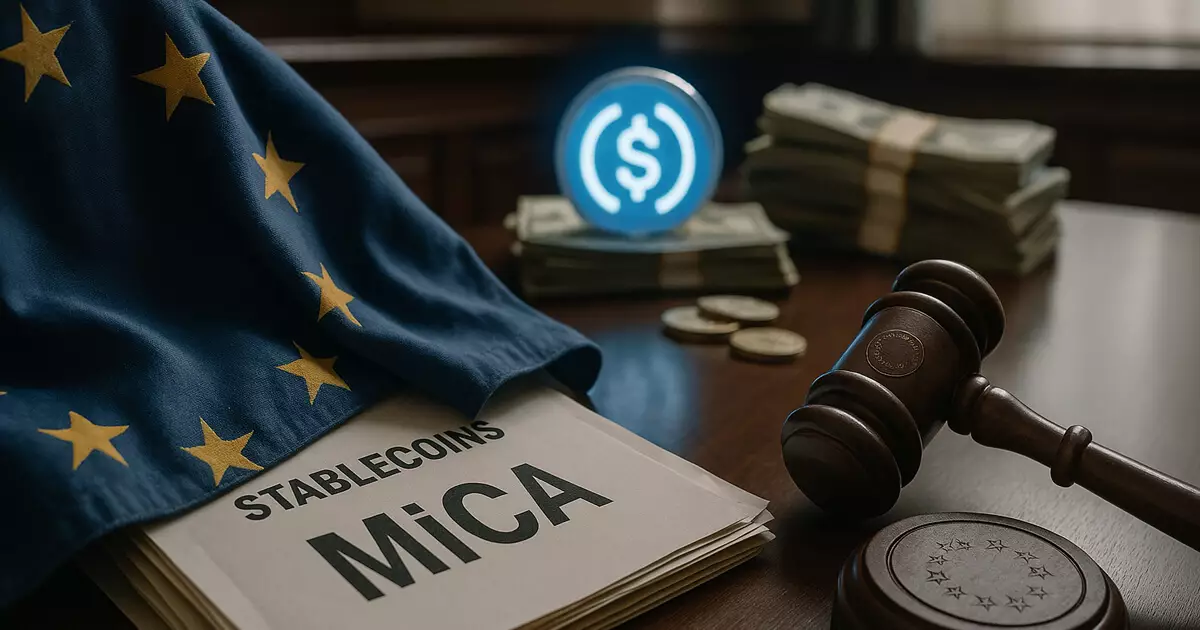The European Union’s recent MiCA regulation aims to carve out a safer crypto frontier. However, attached to this noble intention are threads of contradiction that may unravel Europe’s standing in the global financial arena. While regulators hustle to hem in crypto liquidity within the euro zone, they might be unwittingly bolstering the primacy of the U.S. dollar. In their bid for control, European regulators may be cementing the very power structures they seek to challenge. This reality is not merely an accident—it reflects a profound misunderstanding of how innovation and competition function in the finance sector.
Imagine trying to build a race car while shackling your engineers with regulations that limit speed and creativity; this is what the MiCA regulation does to the burgeoning sector of euro-denominated stablecoins. A straightforward observation presents itself: When innovation is hampered, alternatives stagnate. It seems that regulators prefer to massage a controlled, government-sanctioned digital currency (CBDC), mistakenly believing this will enhance the euro’s stature. Instead, they are sidestepping an opportunity to challenge the dollar with a robust euro-backed stablecoin by drowning it in needless red tape.
The Missed Opportunity of the Euro
The global economy has become increasingly reliant on stablecoins that enable rapid transactions across borders—a revolution fostered not by state oversight but by private initiative. The astonishing statistic that over 99% of stablecoins are pegged to the U.S. dollar is a glaring sign that the European Union’s aspirations for a euro-dominated financial landscape are merely dreams lacking practical grounding. If Europe truly wanted to compete, it would prioritize the development of euro-stablecoins. Instead, MiCA’s stringent rules make this a Sisyphean task.
It’s bewildering that as various nations, including members of BRICS and even the EU, plot paths against the dollar’s grip on global finance, Europe ironically shackles its own potentially strong contender. If the EU wants to challenge the dominance of USD-backed stablecoins, it would have to embrace and empower euro-related alternatives rather than banish them through regulatory hurdles. Innovation thrives in conditions of freedom, not constraint, yet policymakers seem politically shy to admit this truth.
The Serious Implications of a CBDC
Let’s dive deeper into the implications of a potential euro CBDC. The optimism of a digital euro enhancing the euro’s global standing is not just misguided; it’s a unique species of naivety. Government-focused projects have historically struggled against the pace and adaptability of private sector ventures. Moreover, a CBDC invites a host of concerns around privacy and state surveillance, factors that could deter its usage, particularly when the very essence of cryptocurrency is rooted in freedom and autonomy.
Meanwhile, across the Atlantic, American regulators are pursuing an altogether different path. The U.S. has taken a more hands-off approach that allows for organic growth in the stablecoin space. Instead of attempting to create a government-issued alternative that could lead to public mistrust, regulators are facilitating an environment ripe for innovation. This has imbued the dollar with not just resilience but renewed strength at a time when financial landscapes worldwide are shifting rapidly.
A Strategy of Irrelevance
By choosing to enforce MiCA, European regulators may not just have missed an economic opportunity—they may have mortgaged their geopolitical clout. They are, in essence, constructing a fortress around their striving financial ecosystem, relegating themselves to a spectator role in the very shift of power they aim to influence. Emphasizing control rather than fostering innovation turns the EU into an observer in a blockchain and crypto-driven financial revolution.
As capital, talent, and innovative spirit flow toward jurisdictions that welcome experimentation and risk, Europe risks becoming an outsider looking in. The irony is palpable. While policymakers may believe they are safeguarding the financial future of Europe, they might instead be building a regulatory moat around their own obsolescence.
With crypto adoption accelerating globally, those who promote agility and embrace change become the architects of financial infrastructure’s future. While Europe persists in its stringent oversight, they must ponder: will they empower new realities, or simply resign themselves to watching others write the next chapter of economic history? With the MiCA regulation in play, the landscape hints that the U.S. dollar could very well emerge as an unintended beneficiary of Europe’s strategic miscalculations.














Leave a Reply